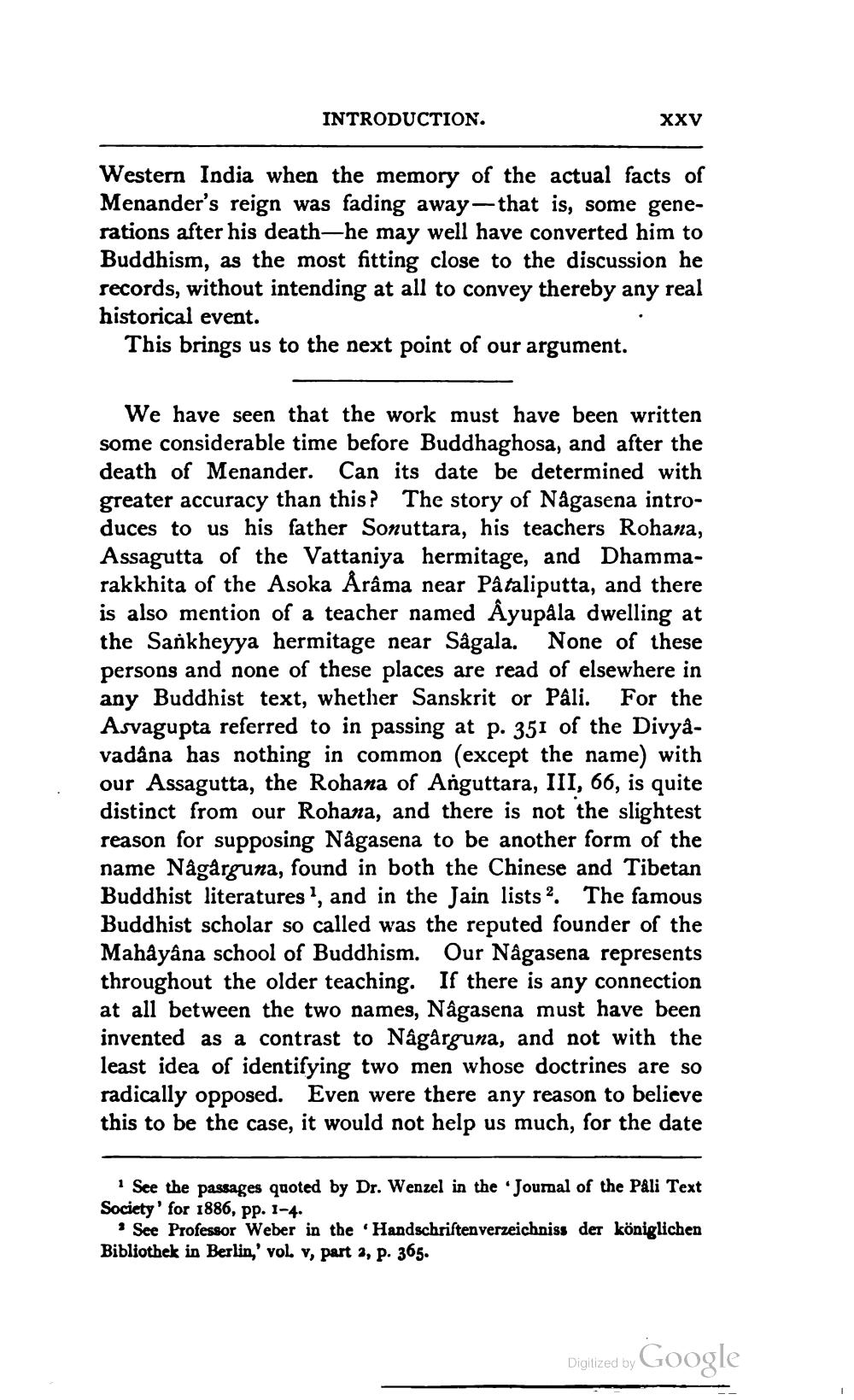________________
INTRODUCTION.
XXV
Western India when the memory of the actual facts of Menander's reign was fading away-that is, some generations after his death-he may well have converted him to Buddhism, as the most fitting close to the discussion he records, without intending at all to convey thereby any real historical event.
This brings us to the next point of our argument.
We have seen that the work must have been written some considerable time before Buddhaghosa, and after the death of Menander. Can its date be determined with greater accuracy than this? The story of Nagasena introduces to us his father Sonuttara, his teachers Rohana, Assagutta of the Vattaniya hermitage, and Dhammarakkhita of the Asoka Årâma near Påtaliputta, and there is also mention of a teacher named Ayupåla dwelling at the Sankheyya hermitage near Sågala. None of these persons and none of these places are read of elsewhere in any Buddhist text, whether Sanskrit or Pali. For the Asvagupta referred to in passing at p. 351 of the Divyavadåna has nothing in common (except the name) with our Assagutta, the Rohana of Anguttara, III, 66, is quite distinct from our Rohana, and there is not the slightest reason for supposing Nâgasena to be another form of the name Någårguna, found in both the Chinese and Tibetan Buddhist literatures, and in the Jain lists 2. The famous Buddhist scholar so called was the reputed founder of the Mahayâna school of Buddhism. Our Nagasena represents throughout the older teaching. If there is any connection at all between the two names, Nagasena must have been invented as a contrast to Nâgârguna, and not with the least idea of identifying two men whose doctrines are so radically opposed. Even were there any reason to believe this to be the case, it would not help us much, for the date
See the passages quoted by Dr. Wenzel in the Journal of the Pali Text Society' for 1886, pp. 1-4.
* See Professor Weber in the Handschriftenverzeichniss der königlichen Bibliothek in Berlin,' vol. v, part 2, p. 365.
Digitized by Google




